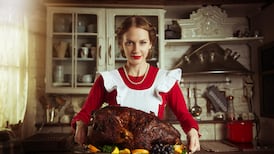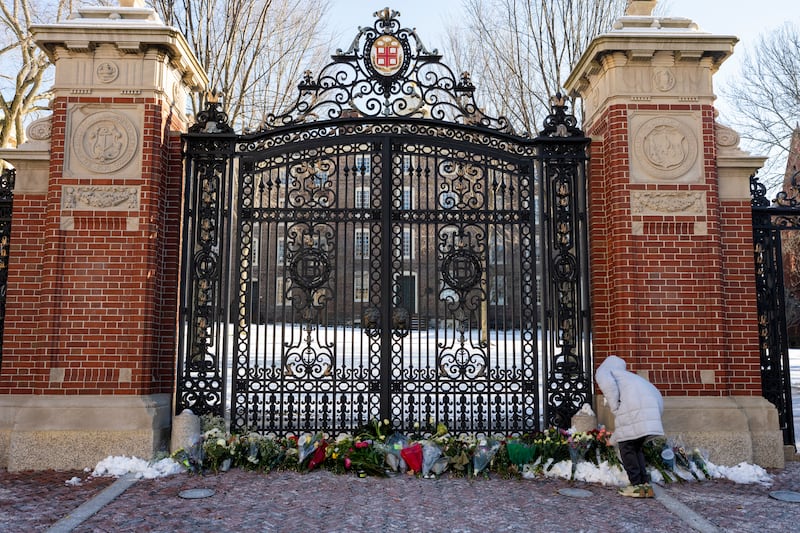When Ireland went into lockdown last March, people panicked as never before and swept into supermarkets like locusts, stripping shelves bare and piling trolleys high with sometimes comical volumes of toilet paper and flour.
Throughout the fear-fuelled hysteria, supermarket staff kept the show on the road. They stocked and restocked shelves, handled stressed-out shoppers and policed a raft of measures including hand-sanitisation stations, social-distancing rules and dedicated hours for the vulnerable, all of which were aimed at keeping staff and shoppers safe.
More than anything, they kept us going. If Covid-19 has taught us nothing else, it has taught us the value of frontline retail staff to our wellbeing and that they are almost certainly not paid enough for the job they do.
With the country stuck in the middle of Level 5 restrictions, we are back where we were – with perhaps less demand for loo roll or banana bread – and once again relying on supermarkets to feed and help us interact with other human beings.
Supermarkets are so central to all our lives. But how do they compare, and how does a weekly shop for a family of five differ from one retailer to the next?
For the past five weeks I have done the family’s weekly shop in a different supermarket to find out how they compare. It was not a scientific experiment. (It’s quite possible you could do the same thing and find different price variations. Also, most supermarkets have voucher or loyalty schemes that reduce prices if you shop there regularly – not possible in this case.)
This is the lived experience of a sometimes flighty shopper, buying the weekly groceries for a two-income, five-person household. Here’s what I found.
Marks & Spencer: €258
Going food shopping in a Marks & Spencer at 6pm on a Sunday evening, listless and hungry, with a tired toddler performing an unexpected and entirely unwelcome trapeze act in the trolley was very stupid. Who knew?
Because of the Great Unpleasantness I am very rarely in Dublin’s city centre these days, so M&S is no longer on my way to or from anywhere.
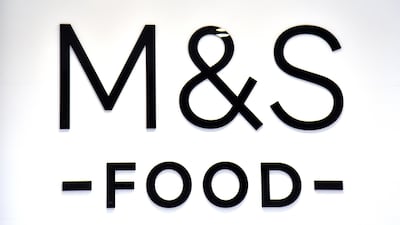
I miss it to be honest, just as I miss so many things I took for granted in times past. And as I walk through the Mary Street doors of the British chain I’m immediately bedazzled by the gorgeous looking ready meals glowing under supermarket lights. But I know now is not the time for buying a random ready-made Friday night dinner. This is my weekly shop, so I must stay focused.
I start in the dairy aisle and chuck milk into the trolley without paying too much attention. It’s milk after all. It is only later I pay the price for my carelessness. Literally. The milk costs €1.90 for a litre compared with a regular price of 75 cent. Not only that but it comes from Cornwall, which means I have to drink it with a side order of shame. What – and I wonder this after the fact – am I doing buying milk from foreign cows when Irish cows produce excellent milk of their own?
I should feel further shamed for buying the Cornish cruncher cheese but that was intentional. This cheese, which costs well over €5 a block, is excellent and worth every cent.
I add Actimels, Babybells, sour cream and crème fraiche to the trolley before I leave the dairy aisle and head with purpose to the Dine In for Two section. I remember years ago asking a senior M&S executive about this loss-leading offer, which allows you to buy a main course for two, a side dish, a dessert and a bottle of wine for €14. “We don’t like the term loss-leader; we prefer to use footfall driver,” he said.
The shop – supplemented by things already in the cupboard – pretty much feeds the Pope household for a week with virtually no waste
It has certainly driven my feet into M&S on many occasions, and I like to think I have mastered the art of the deal. First, when I consider the choice on offer in the dine-in deal, I never buy the processed ready meals for two. I only ever buy the fresh fish or the roast chicken. I never buy the sugary desserts and only buy the fruit or cheese options. And I only ever buy the vegetables sides and never the chips or bready things. I also only buy the most expensive of the wines included.
So, this is how it worked out on this occasion. The full chicken has a price of €10.61; I spend ages rooting around for the biggest one. The mini-cheese selection should have cost me €4.80, and the pea and carrot vegetable mix had a price tag of €3.60, while the wine had a regular price of €10.50.
Keen students of maths will have already worked out that the price of these four items on a normal day would have been €29.52, but by buying them in the dine-in deal, I pay less than half that.
Feeling smug and in denial about that facts that a) I would never have bought the cheese or peas or possibly the wine were they not in the deal and b) a chicken can be bought in other supermarkets for a fiver, I go directly to the stir-fry section where there is always a deal to be found.
Some class of beef, fish or chicken, stir-fry vegetables, noodles and a stir-in sauce sells for €8.50. I buy two deals and get the prawns on the double. With no deal, the garlic and ginger sauce would have been €1.50 and the prawns €5.20 each. The noodles have a normal price of €2.20, while the stir-fry vegetables cost €2.20. All told then, this deal would have cost €22.20, not the €17 it actually cost.
I also buy three pots of garlic-dressed prawns and save €5.60. I buy two bunches of grapes and save €3.80, and two packets of pre-sliced mangos and save €1.80.
From there the bargain hunting goes downhill. I buy what I think will be enough food for a week including – and I am not proud to admit this – triple chocolate crunch cereal, some juices, fancy bread, four breaded cod fillets, and a bag of five salmon fillets. Without the savings, the bill would have been €290.09 but with the dine-in deal and other discounts I save just under €32.
The shop – supplemented by things already in the cupboard – pretty much feeds the Pope household for a week with virtually no waste. There is a prawn stir-fry, a veggie version days later, a fish pie made with the salmon (which actually counts for two meals), a prawn pasta thing, a Sunday roast on a Tuesday evening, stuffed ravioli, and fish burgers. (Think cod fillets in between brioche buns. And yes, it is far from brioche buns this Pope was reared.)
Lidl: €269
“There’s a foot-warming cushion you can put your feet into,” are the last words I hear as I leave for my Lidl shop in Dublin 7. I buy two of them at just under €6 each. Neither is for me but as we enter winter they are among the most beloved of my middle-aisle purchases and certainly have seen more use than the stupid waffle iron or the ratchet set that are still wasting space in my house.
I buy everything else you might expect in terms of tinned food, cereals and dairy but the stars of the shop are the chili rice-crackers
This shopping trip was in the early days of Level 5, before Lidl and Aldi this week bowed to pressure to ban non-essential middle-aisle sales.
For the sake of full disclosure I should point out that Lidl is my nearest shop and probably the place outside my home I have spent most time this year. And yes, that might just be the saddest sentence I have ever typed.
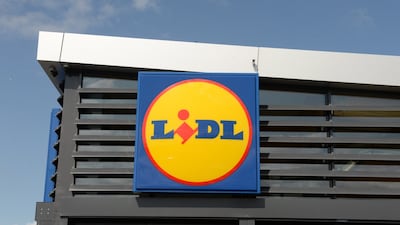
I say that to make it clear that the German supermarket holds few surprises for me and I can be up and down its four or five aisles and have a trolley full of food and rolls of ugly fake grass in under an hour. The blocks of mature white cheddar are excellent and excellent value for money at €2.99 a block, the fish selection is surprisingly varied and very good value – the prawns are €2.99 for 180g packets while two organic salmon fillets are €5.49.
The steaks are good too – and all Irish. The vegetables are grand, although some of the fruit does have a tendency to go mouldy before it gets eaten in our house. I am not sure who is to blame for that – us or Lidl. I am also fond of the 99 cent organic milk.
I buy everything else you might expect in terms of tinned food, cereals and dairy but the stars of the shop are the chili rice-crackers. At just 99 cent they are up there with the nicest crackers I have found in any supermarket. And you can take that to the bank.
There are good wines too, some costing a good bit under a tenner, so it seems rude not to include them in the shop. Once the race to get my shopping into the bags as fast as the shop assistant can scan them is won, I hand over €268.99 or almost exactly what I paid in M&S – although I do have more food and less of it is processed. It easily keeps the house going for the week.
And there are the spicy crackers too.
Tesco: €375
There are two Tescos on my doorstep in Dublin 7. A massive one and a little one. I tend to shop in the little one because it is faster and I spend less, if only because the range is limited. On this occasion I treat myself to a visit to the massive one. I pay dearly for that.
Coffee, ice-cream and Toilet Duck aside, the amount of actual food I come home with is not out of line with the Lidl shop
At the risk of spoiling the surprise, the big shop in Tesco costs €375.36.
To be fair to the British multiple, it is not that it is dramatically more expensive than the other supermarkets I tried; it is just that it sells a wider range than most of the others, and I end up stocking up on cleaning products and more Magnum ice creams than strictly necessary.
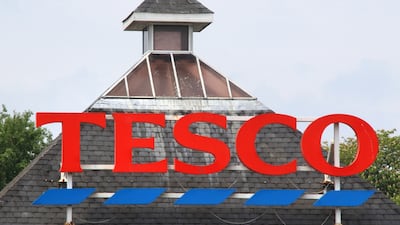
And coffee pods. Tesco sells a range of Starbucks-branded Nespresso machine-compatible coffee pods for between €3.33 (if they are on special offer) and €3.99. And before you say, "Oh I don't like Starbucks, I prefer the Nespresso pods", you should know that the Starbucks ones are made by Nespresso and look and taste almost identical. They are just much handier to buy and are not sold by cool and intimidating people in black polo-necks.
But coffee, ice-cream and Toilet Duck aside, the amount of actual food I come home with is not out of line with the Lidl shop. And it took a lot longer, cost a good few euro more, and it was hard to see any great leap forward in terms of quality.
Dunnes: €230
Many, many years ago – in the year Ray Houghton put the ball in the English net as it happens – I got a summer job in a Dunnes Stores in Galway. It was the third job I ever had. I hated it.
Ireland was a different country in the late 1980s and Dunnes was a different shop. It was cheap, cheerless and simply worse than it is now. I spent endless days sadly pulling tins of own-brand beans to the front of shelves – it was called “facing off” if memory serves me correctly.
When I wasn’t facing off under the baleful glare of mean managers, I was wheeling grim-looking food out from a store room to put on display, and cleaning up when unruly toddlers knocked jars of mayonnaise on to the pock-marked red- and cream-tiled floors.
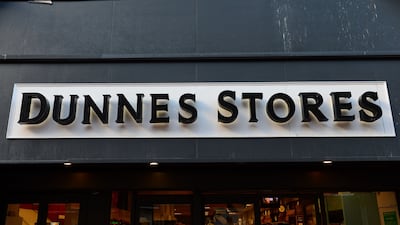
But Dunnes Stores has been on quite the journey in recent years and is now one of the higher-end retailers we have. I visit the branch on St Margaret's Road in Finglas, Dublin 11. It is Sunday morning, four days after the country moved up to Level 5. So I shop alone, depriving my toddler of the chance to knock a jar of mayonnaise on to the floor for some young fella to clean up.
The shop is calm and quiet. I marvel at the fruit and vegetables which seem pleasingly fresh, and I take advantage of all manner of two-for-the-price-of-one deals getting strawberries, raspberries, blueberries and mandarins. I probably end up buying more than I need but resolve to have a week of smoothies and wholesomeness.
It is a Sunday morning so I don't buy any booze but easily have enough food to keep the Popes going for the guts of a week, and I am mildly impressed when the bill comes to just over €230
I have been in this Dunnes before but not often, and am again struck by how the shop is unusually laid out with aisles switching seamlessly from soups to soaps in the blink of an eye. One second I find myself wondering which butter to buy – only kidding, I buy Kerrygold obviously, hearing faint echoes of “who’s taking the horse to France, put a bitta butter on the spuds there, Andre” as I do. Then the next second I’m looking at the mouthwash, the baby wipes and the Frozen toys, before heading back to the cheese section.
In short, the layout seems bit all over the shop. I cope.
To its credit, many of the Dunnes Stores own-brand products under its Simply Better label are simply excellent and could easily go toe-to-toe with any of the products selling in any Irish supermarket. Even though I know they cost more, I find myself reaching almost unconsciously for much of the range, figuring that if I am only going to be in the shop once this side of Christmas I may as well treat myself.
I do find myself wondering if I have fallen for one of the oldest tricks in the retail playbook and am spending more money than I need to because of labelling and clever price anchoring.
I buy steak, crab claws and salmon. I nearly buy some crabmeat but – surprisingly – remember to check the use-by date, only to see it is a day earlier than I was shopping. That seemed a bit sloppy to me.
It is a Sunday morning so I don’t buy any booze but easily have enough food to keep the Popes going for the guts of a week, and I am mildly impressed when the bill comes to just over €230.
Shopping local: €340
With local shopping on the increase since the start of the pandemic, it would be remiss not to include it, and – at least in my experience – it is a brilliant option.
There is a vegetable shop on Manor Street near our home in Stoneybatter called the Green Grocer. In pre-Covid times it sold a lot of wholesale fruit and vegetables to restaurants across Dublin, but with the first lockdown it moved into home delivery in a big way.
The Jane Russell sausages were excellent too, as were the custard tarts, the chocolate croissants and the Bean & Goose chocolate
The city’s restaurants’ loss is most certainly my gain. An order for €135 worth of vegetables to feed a family of five is placed on a Friday evening and arrives just over 12 hours later without any fuss. And with virtually no plastic. A cheery man drives up and hands over three cardboard boxes full of wonderfully fresh fruit and vegetables. It is as good as you will get anywhere. And all without getting off my couch for more than 60 seconds.
The delivery includes broccoli, cauliflower, corn on the cob, potatoes, peppers, apples, kiwis, oranges, lemons, limes, strawberries, blueberries, raspberries, tomatoes, fresh herbs, cucumbers and more besides. While it was supposed to be a weekly shop, the €135 bought us easily enough fruit and veg for five for a fortnight.
And because it has come almost directly from the fields, it stays fresh until it is eaten.
But man does not live on vegetables alone. Kish Fish is another excellent resource, at least for the people of Dublin's north inner city. Smoked haddock, tuna steaks, 800g of frozen Argentinian prawns – way better than they sound, incidentally – and six salmon fillets come in at just over €70. A visit to Fresh in Smithfield for cleaning products, dairy products and wine – mainly wine to be honest – adds another €80 or so to the final bill.
I finish in our local shop, Lilliput Stores, one of the best things about Dublin 7. It is a dinky little shop selling the most gorgeous food. It is not cheap but I reckon you are better off spending a bit more on garlic that actually tastes of garlic and I make no apologies for the €2.35 I paid for each of four litres of the Mossfield Organic Farm non-homogenised milk. It is up there with the best milk I have ever tasted.
The Jane Russell sausages were excellent too, as were the custard tarts, the chocolate croissants and the Bean & Goose chocolate. Much of what I bought was probably not necessary but it was a delight all the same, and Lord knows we need a bit of delight in our lives right now.
All told, the local shop ended up costing €340, which was broadly in line with what I spent elsewhere but it was much less hassle than a big shop in a big supermarket. I got nicer things, talked to some lovely people and the money stayed in my local community. What’s not to love about that?






